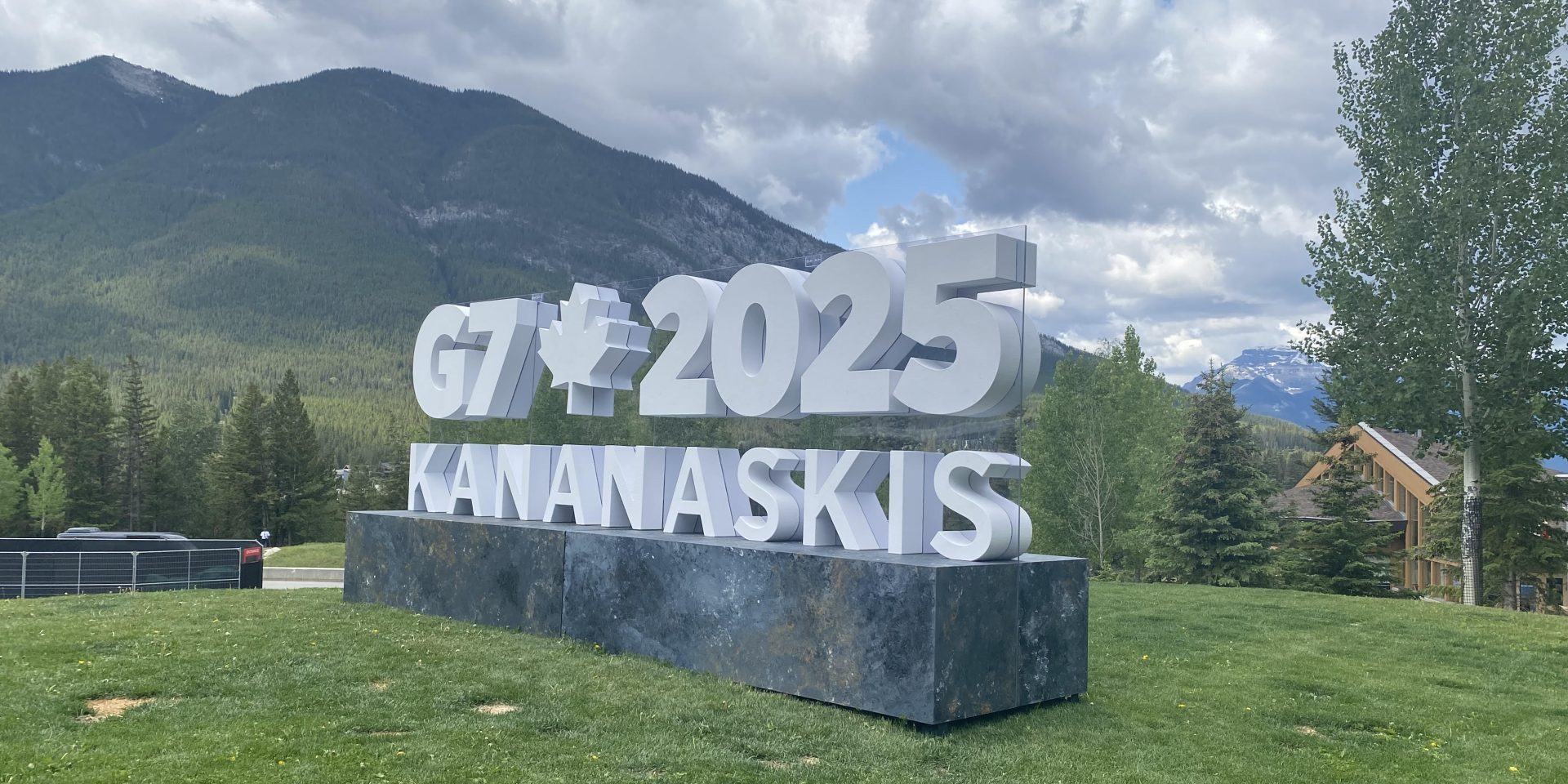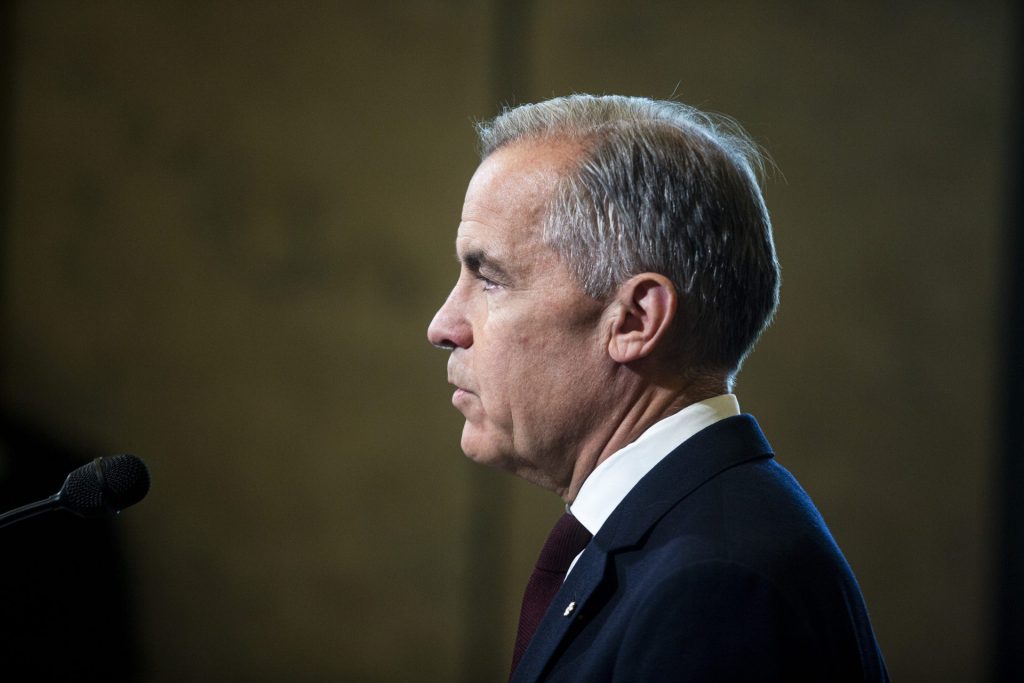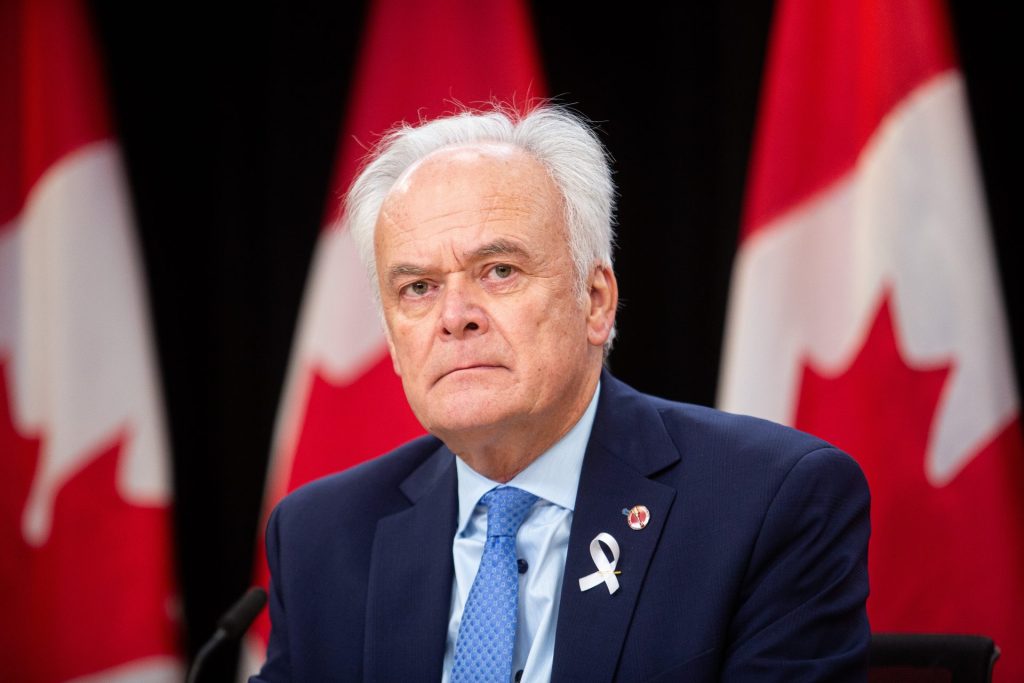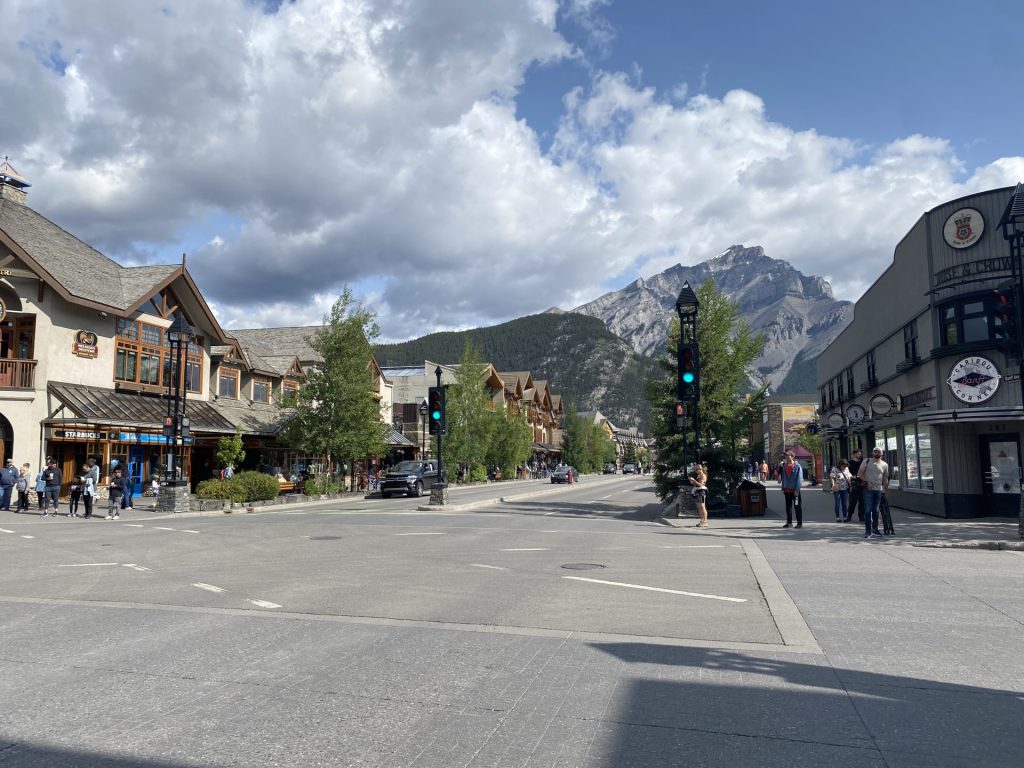Carney comes to the Rockies to try to move mountains at the G7 summit

BANFF, ALTA.—Chairing a successful Group of Seven summit in the Trump age will take moving mountains.
That is the task Prime Minister Mark Carney (Nepean, Ont.) encounters as leaders from some of the world’s most influential democracies arrived in Kananaskis, Alta., on June 15.
The idyllic resort town on the eastern edge of the Rocky Mountains plays host to the world stage for the second time—it previously hosted a G8 Leaders’ Summit in 2002.
Carney is hoping to avoid the chaotic scenes that unfolded the last time that Canada hosted United States President Donald Trump in Charlevoix, Que., in 2018, which ended in turmoil between then-prime minister Justin Trudeau and Trump, souring their relationship permanently.
The G7 Leaders’ Summit kicks off as Israel and Iran exchange missile fire threatening a larger regional conflict. Ukraine almost certainly will be on the agenda, which likely will be a tension point between Trump and the rest of the group. Then there’s the question of how much world leaders will push Trump with punishing tariffs hanging over their heads.
The first leader to touch down at the Calgary Airport to make their way to Kananaskis was Australian Prime Minister Anthony Albanese in a Royal Australian Air Force liner at 1:24 p.m. local time. He was followed by United Kingdom Prime Minister Keir Starmer, then Carney, and later German Chancellor Friedrich Merz.
Starmer and Carney arrived from Ottawa where they held bilateral meetings.

The welcoming committee included Alberta Premier Danielle Smith and Calgary Mayor Jyoti Gondek.
European Council President António Costa is scheduled to arrive at 4:30 p.m. MT, followed by South African President Cyril Ramaphosa at 5 p.m., European Commission President Ursula von der Leyen at 5:30 p.m., Japanese Prime Minister Shigeru Ishiba at 6 p.m., and French President Emmanuel Macron at 7 p.m.
Carney is expected to meet with Albanese and Ramaphosa in Calgary, before heading to Kananaskis where he will hold meetings with representatives of Treaty 7 First Nations and with Merz.
According to Roll Call, Trump’s arrival time in Calgary is scheduled for 9 p.m. MT.
The first official day of the summit on June 16 will start with bilateral meetings, before the official welcome of the G7 at 10 a.m. MT.
The only multilateral working session currently scheduled will begin at 10:30 a.m., and last until noon, focused on the “global economic outlook.”
The rest of the day will be filled with more bilateral meetings, until the G7 “family photo” in the late afternoon.
During the final day of the summit, the invited guests will be included in the festivities, including a “family photo” of outreach and invited leaders, which will include Ukrainian President Volodymyr Zelenskyy and NATO Secretary General Mark Rutte.
The second and final working session currently scheduled will be on “energy security.”
Like the first day, the second day is mostly filled with bilateral meetings.
Carney will wrap the summit with a press conference at 4 p.m. MT on June 17.
More than 80 kilometres from Kananaskis, hundreds of reporters from around the world have come to the picturesque town of Banff. A small group of pool reporters will be allowed access to the summit site, but the remainder have posted up in the international media centre at the Banff Centre sitting on Tunnel Mountain, also known as Sleeping Buffalo Mountain.
While journalists watched leaders’ planes touch down in Calgary on screens in the Banff media room, runners who were competing in the local marathon filled the town’s streets.
The first timers
For more than half of G7 world leaders, Kananaskis will be their first summit.
Carney will have to navigate chairing his own inaugural summit. Newcomers also include Merz, Ishiba, Starmer, as well as Costa.
Former G7 sherpa Peter Boehm, now an Independent Senator for Ontario, said it takes new leaders some time to adjust to the format.
“Leaders will come to their first summit not quite knowing what to expect,” he said. “Many will be in listening mode in the beginning, only intervene a bit later on, or once others have spoken.”
He said there is a “certain choreography” in dealing with who is speaking at any given moment.

Boehm said the “beauty” of a G7 summit is that what the participants say is unknown.
“So often leaders go to international meetings and are pre-programmed; they have their text, they make their interventions,” he said. “But [at the G7] there’s a very healthy to-and-fro.”
While Carney goes into the summit as a new leader, he does bring a wealth of G7 experience as a past governor of both the Bank of Canada and Bank of England. Central bankers take part in the G7 finance ministers’ meetings.
Trump and Carney expected to meet June 16
Reports indicate that Carney will hold a bilateral meeting with Trump on June 16.
Macron set the tone for the meeting prior to his arrival, with a stopover in Greenland. Like Canada, Greenland has been subject to annexation threats from Trump.
Threats to absorb Canada as a “51st state” dominated the public portion of the G7 Foreign Ministers’ Meeting in the Charlevoix region this past March as reporters asked top diplomats why they weren’t speaking with a stronger voice against the threats.
In a May 6 meeting at the Oval Office, Carney told Trump that “there are some places that are never for sale,” and Canada “won’t be for sale, ever.” Trump conceded that it takes “two to tango,” but remarked “never say never.”
Despite U.S. Ambassador to Canada Pete Hoekstra announcing that the “51st state” rhetoric was over, Trump has continued with the threats.

Speaking to a University of Calgary conference before the summit, former prime minister Jean Chrétien said G7 leaders shouldn’t allow Trump’s outbursts to dictate the event.
“[Trump] tends to be a bully once and a while. And don’t lose your cool when you have a bully,” he said on June 12. “Unless you grab him by the neck.”
One way the temperature is being cooled before the multilateral meetings kick off is that Canada has indicated it won’t pursue the conventional joint communiqué that caps the summit. However, there have been summits where no joint statement has been released, instead the chair of the released its own statement. That was the approach taken in the 2002 summit in Kananaskis.
Boehm told The Hill Times last week that not having a joint communiqué wouldn’t be a “measure of failure.”
What will make a successful summit?
Trade consultant Eric Miller, president of the Rideau Potomac Strategy Group, said that avoiding a repeat of the 2018 summit in Charlevoix will be a victory for Canada.
“What will be judged as a win will be whether meaningful initiatives can be undertaken,” said Miller, a former official at the Canadian Embassy in Washington, D.C.
He said that the summit is an opportunity for the White House to demonstrate to Canada and other allies that it can still be a reliable partner.
“Canada has an opportunity here to perhaps bridge some of the gaps in the relationship, and put things on a positive trajectory,” he said.
He said that getting through a meeting isn’t in itself enough for it to be called a success, but rather whether people can come together to craft a lasting initiative.
As Carney was waiting for Starmer to arrive at Rideau Cottage on June 14, he talked about the Edmonton Oilers and the summit, according to a pool report.
“The Oilers are gonna win,” he reportedly said. “It’s gonna be the best G7 ever.”
Edmonton lost the game 5-2.
nmoss@hilltimes.com
The Hill Times






 LICENSING
LICENSING PODCAST
PODCAST ALERTS
ALERTS













